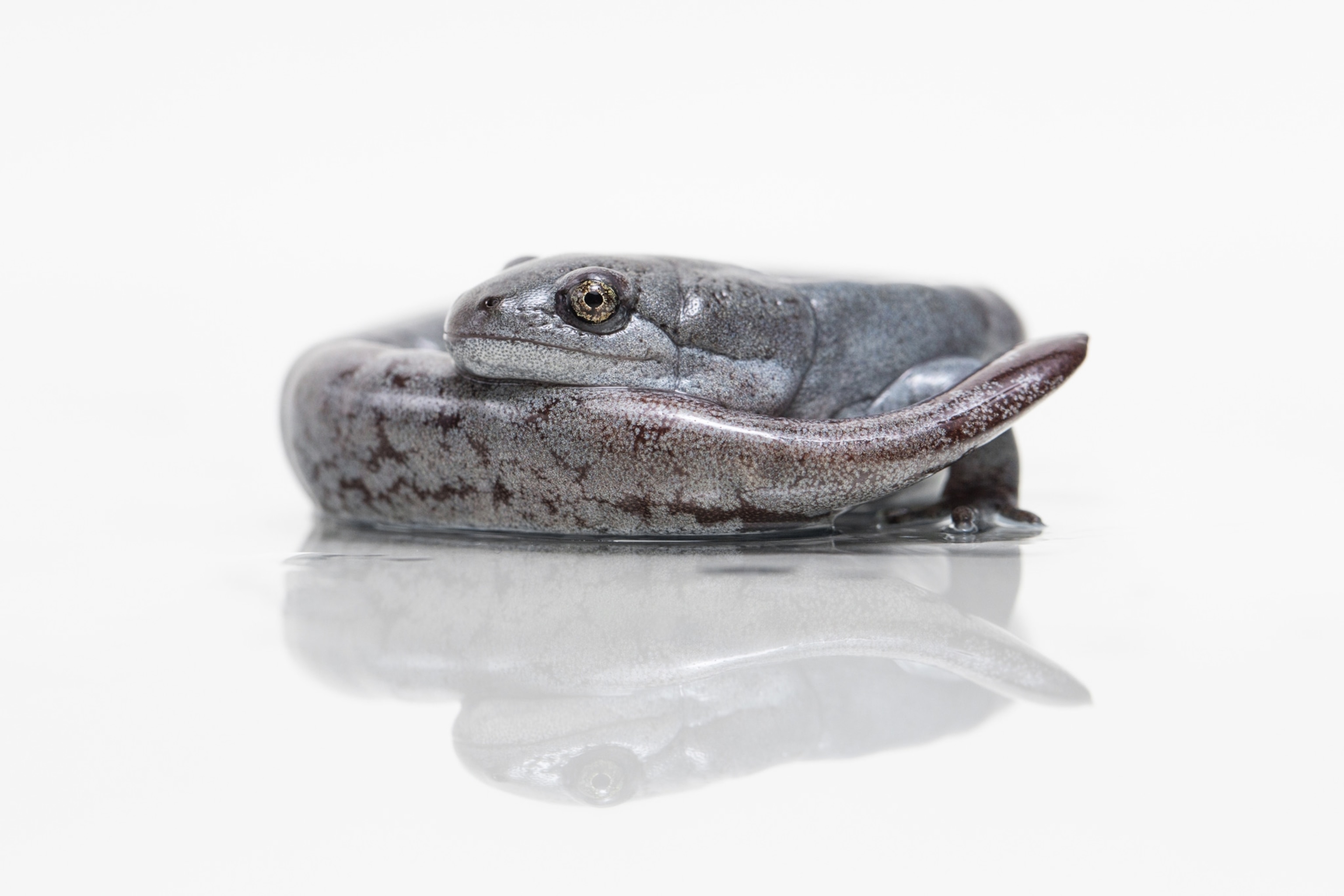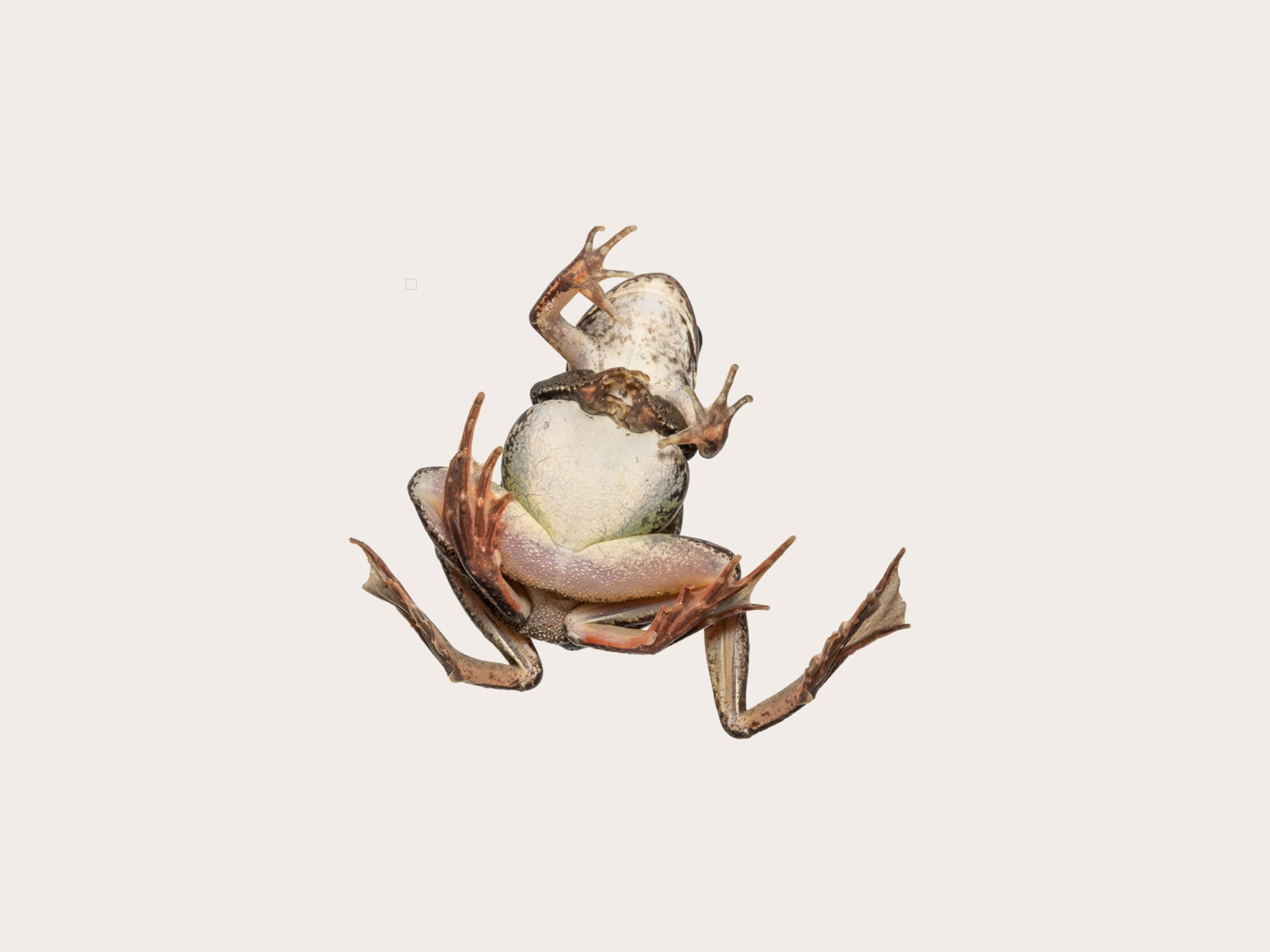
Who Needs Males? Self-Cloning Females Heal Faster
One group of North American lady salamanders has evolved a way to keep its all-female lineage going over time.
One group of lady salamanders don't just survive without males—they thrive.
Some Ambystoma salamanders of northeastern North America don't need males to reproduce, instead cloning themselves generation after generation.
It's a situation many scientists believe is a dead end, since the lack of fresh genes from males could eventually make the females weaker. (See "New Self-Cloning Lizard Found in Vietnam Restaurant.")
But that's not what a new study shows.
A scientific team focused on the ability of a salamander to lose part of its tail—whether in response to a predator or some other mishap—and quickly regenerate the missing appendage. (See "Overachieving Lizard Grows Three Tails.")
When scientists observed the rate at which all-female Ambystoma salamanders regrow their tails with that of other Ambystoma species (with both males and females), they found the unisexual species regenerated new tails 1.5 times faster.
"There's lots of interest in regeneration, but we don't know how diverse this ability is. Our findings are important for sounding the alarm that this ability is far more complex than we thought," says Rob Denton, an evolutionary biologist at Ohio State University.
Stealing DNA
Since self-cloning Ambystoma salamanders evolved more than six million years ago, the lifestyle must have some sort of benefit—or else the lineage wouldn't have survived so long, Denton says. (Also read about how the world's longest snake had a virgin birth.)
One clue is that unisexual Ambystoma salamanders steal DNA from the sperm of other salamander species left lying around. Instead of using that DNA to fertilize their eggs, the all-lady salamanders simply add it to their own genomes.
This means that some females don't have two copies of their chromosomes like most animals, but three or even four copies. Many times, these extra genome copies aren't even of their own species.
Katherine Greenwald, an evolutionary biologist at Eastern Michigan University who studies Ambystoma salamanders, calls herself the "Maury Povich of salamanders" because her work involves figuring out which species contribute genes to the complicated, diverse jumble that is the unisexual Ambystoma genome.
Enter Monica Saccucci, an Ohio State undergraduate, who knew from previous research that asexual snails with extra genome copies regrow missing body parts significantly faster. Although their extra DNA means more genes to copy, they also have more proteins to help make the copies. (See photos of animals that regrow parts, like the weird-looking axolotl.)
To see if the same thing happens in salamanders, Saccucci collected eggs from all-female Ambystoma salamanders and small-mouthed salamanders, A. texanum, and grew them to adulthood in the lab.
The unisexual salamanders had three genome copies: One genome derived from the blue-spotted salamander, A. laterale, and two genomes derived from the Jefferson salamander, A. jeffersonianum.
Saccucci removed tail parts from all 12 lab salamanders, and then measured how quickly the limbs grew back.
'Great First Step'
For the first three weeks, the tails in both groups of salamanders grew back at the same rate, according to the study, published recently in the Journal of Zoology.
Then, the researchers made their diets more nutritious, which more closely mimics what happens in the wild.
From this point on, the tails of the unisexual salamanders began regenerating much more quickly, eventually completing regrowth 1.5 times more quickly than A. texanum.
"It's a really powerful and cool experiment. They are comparing a trait about who wins in a natural setting. That doesn't happen in a lot of studies," says Maurine Neiman, an evolutionary biologist at the University of Iowa who led the regeneration research on the asexual snails. (See "Spider-Man Ready: 5 Animals That Regrow Parts.")
A key limitation of this study, both Greenwald and Neiman point out, is that the researchers didn't compare the regeneration rates of the unisexual salamanders with those of which they share a genome.
That makes it more difficult to determine whether the regrowth differences were due to their asexual reproduction, the number of genome copies, or some innate differences in the rate of genome copying.
Even so, "it's a great first step," Neiman says.
"The number of copies of a genome is one of our most fundamental traits, and we still don't know why so many species have settled on two copies."
Follow Carrie Arnold on Twitter.





